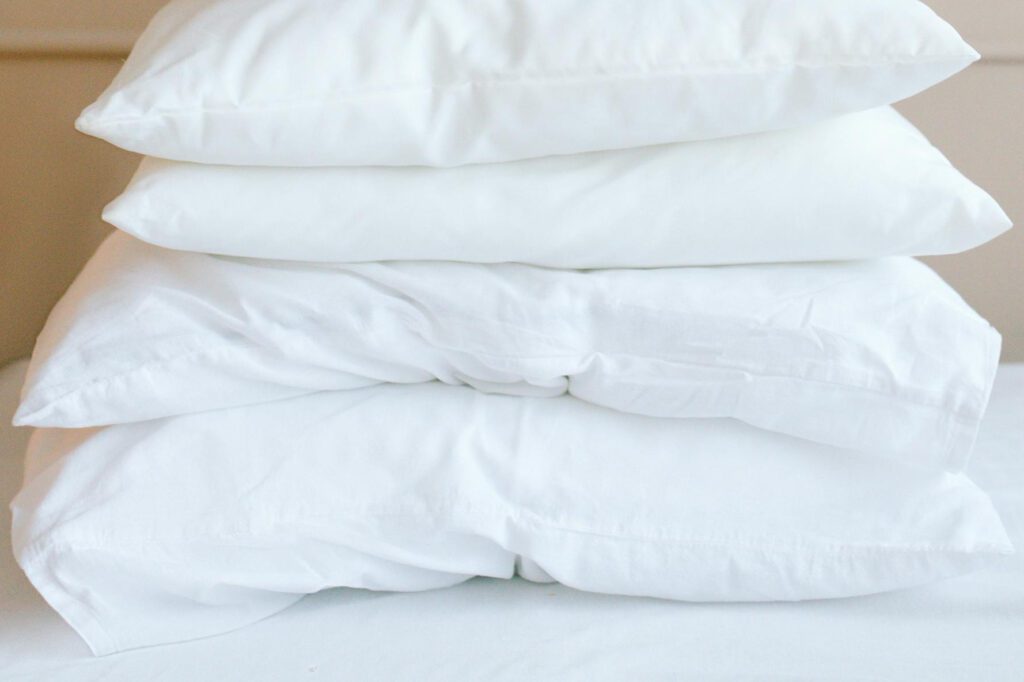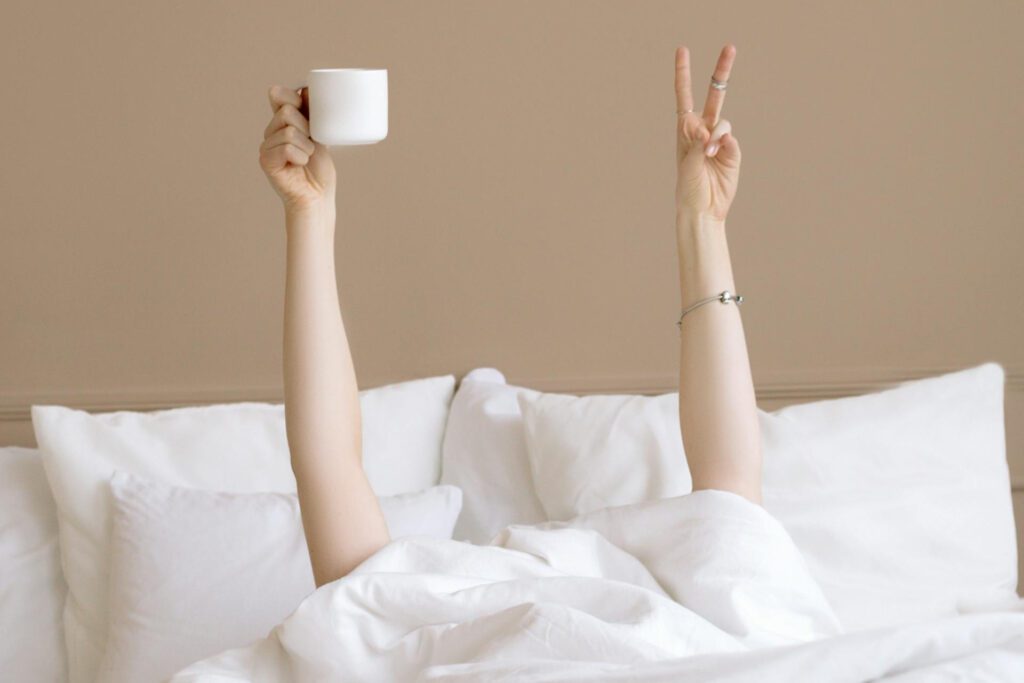
As someone who treats migraine and lives with it myself, I’ve been on an endless search for the perfect pillow. You’d think by now I’d have found “the one,” but the truth is, I currently sleep with eight pillows and have tried over fifty in total. Each one has offered something different, yet none have checked every box. If I could fuse all the features I love into one pillow, that would be ideal. Until then, the rotation continues.
My Evaluation Process: Trial, Error, and Rotation
There’s no formal process I follow. I typically test a new pillow for about one to two weeks. If I’m waking up frequently to readjust it, that’s a clear sign it’s not the right fit. On the flip side, if I can sleep through the night and wake up without neck pain, I’ll keep it in the mix. Most pillows pass the initial trial, but over time they may lose support or just stop feeling right. That’s why I like having a rotation, when one pillow starts to feel uncomfortable, I always have a backup..
The Role of Pillows in Migraine Management
Is a good pillow essential for managing migraine? Maybe. While I believe it helps, it’s not the whole story. I think that because people with migraine have a lot of associated neck pain and trouble getting comfortable, the pillow seems like a very important tool. However, I notice that when I am feeling overall good and have minimal stress (like on vacation), I sleep well even with the flat hotel pillow. Thus, while I think a pillow can be helpful, managing migraine itself is still the key.

What to Look For in a Pillow
If you live with migraine or frequent headaches, ergonomics matter. Sleep position should guide your choice. As a side sleeper, I like everything in alignment, starting with my neck and shoulders and then my knees and hips. So, I use a side sleeper pillow with firm neck support and a pillow for my arms to rest on. If I am really going crazy, I also put a pillow between my knees.
Other features to consider:
- Sleep position: First, I recommend buying a pillow based on how you sleep (back, side, stomach). Certain pillow shapes are best suited for specific sleep positions. For example, side sleepers usually need more neck support, so a very flat pillow would be suboptimal. For a stomach sleeper, though, a flat pillow may be preferable, as a high-loft pillow can be uncomfortable. Then decide if you want your pillow to have a fixed height. If your needs change frequently, then a pillow that allows the option to adjust its height or thickness would be preferable. These pillows can be filled with feathers, foam, latex, water, or other materials.
- Temperature & Breathability: Temperature and breathability may be important if you tend to get hot while you sleep. Memory foam pillows, for example, can trap heat and be uncomfortable for those sensitive to heat. In these instances, I would recommend pillows with more natural breathability, like that found in latex, or pillows with cooling technology.
- Material Sensitivity: If smell is an issue, I would recommend a pillow made from hypoallergenic, low-odor materials, such as natural latex, organic cotton, buckwheat, bamboo, or water. Smell can be an issue with memory foam pillows. However, if you are a memory foam lover and concerned about the smell, choosing a gel-infused or ventilated memory foam pillow can help.
- Migraine vs. Tension-Type Headaches: My pillow recommendation would be the same for migraine and tension-type headaches, as it all comes down to neck support.
What to Avoid
I don’t like pillows that lack cervical support, so flat or overly soft pillows are a no-go for me. On the other hand, pillows that are too firm can put excess pressure on the head and neck and may also be uncomfortable. I look for a balance between firmness and contouring.
I also don’t like pillows that have an uneven fill distribution or those that have allergen-prone materials.
Do I Recommend Specific Pillows?
I get this question all the time and I wish I did! Finding the right pillow often comes down to personal preference and comfort. Since needs can vary with pain levels, it may be worthwhile to rotate between a few different pillow types. If you’re not sure where to start, I would say to try a pillow with a malleable core, like water-based or adjustable-fill pillows. If you need more neck support, I would then move to a memory foam pillow.
Some of Dr. Natbony’s Personal Favorites
As a side sleeper, I need a pillow that lifts my head just enough to align my neck and spine without overdoing it. The support has to be firm enough to prevent me from sinking too low, but not so rigid that it creates pressure. My long-time favorite was an original Tempur-Pedic side sleeper pillow I bought back in 2011. Sadly, it’s no longer in production. Since then, I’ve tried countless alternatives, hoping to find something comparable.
Some came close. The Dosaze Contoured Orthopedic pillow is my current runner-up. I also had a brief stint with the Eli & Elm pillow, appreciating the adjustable fill, but I ultimately realized that memory foam suits me better than shredded fill.
Closing Thought
If you’re dealing with headache, don’t underestimate the role your pillow plays in your overall comfort. It may not cure your migraine, but finding the right one can certainly make sleep (and life) a bit easier.
For more insights on this topic, visit our Press page to explore Dr. Natbony’s featured interview in MigraineAgain and her appearance on the HeadWise podcast, where she dives deeper into the link between sleep and migraine. Looking for personalized guidance? Book a consultation with Dr. Natbony to discuss integrative treatment options tailored to your needs.

